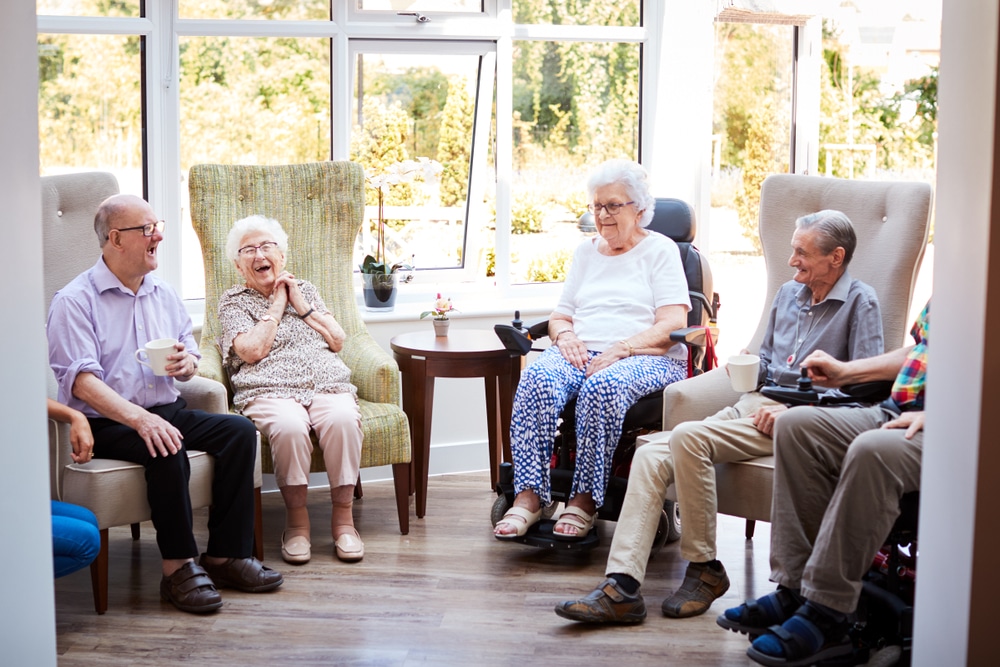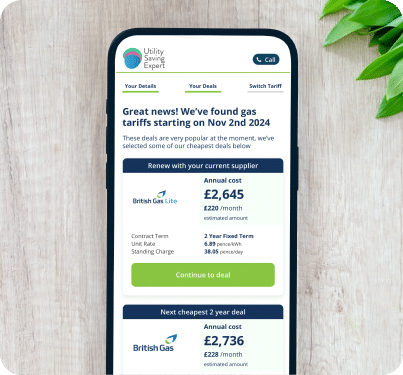The Impact of Public Perception: Why Sustainability is Crucial for Care Homes
In the modern world, sustainability is not a mere buzzword; it has become a crucial aspect of every industry, including care homes. By prioritising sustainability in energy management, care homes can significantly improve their public perception and reputation while reaping numerous other benefits.

Article Contents
Introduction: The Power of Public Perception
Public perception plays a vital role in shaping a care home’s reputation. A strong commitment to sustainability resonates with environmentally conscious individuals and families seeking responsible care for their loved ones. Demonstrating that your care home values the environment and actively pursues eco-friendly practices will foster trust among residents, their families, and the wider community.
Business energy tariffs are instrumental in promoting sustainability within care homes. By opting for green tariffs that support renewable energy sources or carbon offsetting schemes, care homes can reduce their carbon footprint and contribute to a cleaner future. Choosing the right energy supplier that aligns with your care home’s environmental goals is essential to making a positive impact.
Prioritising sustainability in care homes offers numerous benefits. In addition to enhancing public perception and reputation, adopting sustainable practices can lead to long-term cost savings through reduced business gas and electricity bills and avoidance of fines associated with non-compliance. Furthermore, integrating eco-friendly measures into everyday operations can boost employee morale and engagement as they feel part of a greater cause.

Compare Business Energy Prices, Suppliers & Rates

Balancing Cost Effectiveness and Sustainability: A Win-Win Approach
In today’s competitive care home industry, striking a balance between cost-effectiveness and sustainability is paramount. By adopting a win-win approach that focuses on both these aspects, care homes can enhance their public image and secure long-term financial savings.
The connection between cost-effective energy tariffs and sustainability is undeniable. By opting for green tariffs that support renewable energy sources or carbon offsetting schemes, care homes can significantly reduce their carbon footprint while lowering their energy bills. This dual benefit makes it attractive for care homes looking to improve their bottom line and environmental impact.
Renewable energy sources, such as solar or wind power, offer long-term cost-saving solutions for care homes. While the initial investment may be higher than conventional energy sources, the long-term savings derived from reduced energy bills and government incentives make it a financially viable choice.
Effective energy management plays a crucial role in reducing costs and minimising a care home’s carbon footprint. Care homes can reduce consumption and costs by implementing smart meters, energy-efficient lighting, and insulation improvements while promoting sustainability.
Several case studies showcase successful cost-saving and sustainable care homes. For instance, one UK-based care home managed to reduce its annual energy costs by 20% through the installation of solar panels, while another facility achieved 30% savings by adopting an integrated approach to energy management that included LED lighting upgrades and improved insulation.
The integration of cost-effective and sustainable practices within care homes can lead to a win-win scenario that benefits both the environment and the bottom line. Care homes can elevate their public perception while securing long-term financial savings by making informed choices about energy tariffs, investing in renewable sources, and implementing effective energy management strategies.
Regulatory Compliance: Staying Ahead of the Curve
Regulatory compliance in the care home industry is not just a mere obligation; it’s a driving force behind sustainability and long-term success. Staying ahead of the curve ensures that your care home remains compliant with current regulations while paving the way for a greener future.
Regulatory requirements play a pivotal role in promoting sustainability within care homes. By adhering to these standards, care homes demonstrate their commitment to reducing their environmental impact and ensuring the well-being of residents and staff alike. Non-compliance, on the other hand, can lead to severe penalties, including fines and reputational damage.
Opting for renewable energy tariffs is one way care homes can maintain compliance while promoting sustainability. By choosing an energy supplier that supports renewable sources or carbon offsetting schemes, care homes reduce their carbon footprint and align themselves with regulatory requirements.
As regulations are ever-evolving, preparing for future changes is critical for care homes to stay ahead of the curve. Investing time and resources in staying informed about upcoming regulatory shifts will enable your care home to adapt swiftly and remain compliant. This proactive approach will save you from potential penalties and showcase your commitment to responsible practices.
Regulatory compliance is crucial to operating a successful and sustainable care home. By staying informed about regulatory changes, opting for green energy tariffs, and preparing for future shifts, you can ensure your care home remains compliant while contributing to a cleaner and healthier environment for all. Embrace this win-win approach and watch your care home thrive in both reputation and financial stability.
Like what you’re reading? Get more in our monthly newsletter!
Get the latest news and articles straight to your inbox from Utility Saving Expert
Employee Engagement: Fostering a Culture of Sustainability
Sustainability initiatives are no longer a mere afterthought; they have become vital to employee satisfaction and retention in care homes. By fostering a culture of sustainability, care homes can create an environment where employees feel valued, motivated, and proud to contribute to the organisation’s eco-friendly goals.
Engaging employees in sustainability efforts requires a multi-faceted approach. First and foremost, education is key: provide regular training sessions and workshops on the importance of sustainable practises and how each employee can make a difference.
Next, establish clear communication channels for staff to share their ideas, concerns, and achievements related to sustainability initiatives. Finally, consider implementing incentive programmes that reward eco-friendly behaviours, further encouraging employee participation.
Energy tariffs play an essential role in supporting employee engagement with sustainability. By opting for green energy tariffs that promote renewable energy sources or carbon offsetting schemes, care homes demonstrate their commitment to creating a sustainable work environment. This tangible proof of dedication to eco-friendly practices bolsters staff morale and fosters a sense of shared responsibility.
Innovative technologies can also be employed to promote employee involvement in sustainability efforts. For example, introducing smart metres or energy management systems allows staff to monitor real-time energy usage and identify areas for improvement. Care homes cultivate a proactive culture of sustainability by empowering employees with the tools to actively participate in energy conservation.
Gaining a Competitive Advantage through Sustainability
In today’s fiercely competitive care home industry, prioritising sustainability can be the game-changer that sets your establishment apart from the rest. Embracing eco-friendly practices appeals to environmentally conscious clients and enhances your care home’s reputation, driving business success.
Public perception is a powerful force that can make or break a care home’s prosperity. By showcasing your commitment to sustainability, you tap into the growing demand for responsible and ethical services, attracting more clients and fostering trust among residents, their families, and the local community.
Selecting a renewable energy tariff is a strategic move for care homes looking to gain a competitive edge. By opting for green energy suppliers that support renewable sources or carbon offsetting schemes, you demonstrate your dedication to creating a sustainable environment while enjoying cost-saving benefits.
Take, for example, Greenacres Care Home – a facility that has gained prominence through its unwavering commitment to sustainability. By investing in solar panels and adopting an integrated approach to energy management, Greenacres has reduced its annual energy costs by 25%, simultaneously enhancing its reputation as an environmentally responsible establishment.
Futureproofing Your Care Home: Embracing Renewable Energy Sources
The future of care homes lies in embracing renewable energy sources and diversifying their energy portfolio. By doing so, they can mitigate the risks associated with reliance on non-renewable energy sources, such as volatile prices and dwindling supplies.
Diversifying energy sources for care homes offers numerous benefits. It provides a stable and sustainable energy supply, reduces long-term costs, and demonstrates a commitment to environmental responsibility. Moreover, it positions care homes as forward-thinking establishments prepared to tackle future energy challenges head-on.
Renewable energy tariffs play an essential role in helping care homes prepare for these challenges. Care homes can secure long-term savings while reducing their environmental impact by choosing green tariffs that support renewable energy production or carbon offsetting schemes. This approach not only enhances their reputation but also attracts eco-conscious clients.
Innovation and technology are vital in future-proofing care homes. Harnessing cutting-edge solutions like solar panels, wind turbines, or biomass boilers allows care homes to generate clean energy on-site, reducing reliance on external suppliers. Furthermore, implementing smart metres and energy management systems empowers staff to actively monitor and optimise energy consumption.
Imagine a care home that has embraced sustainability and renewable energy sources – one that stands out as a beacon of progress amidst its competitors. This is the future of care homes: a future where innovation drives success and environmental stewardship is synonymous with excellence.
Conclusion:
In an ever-evolving world, the importance of prioritising sustainability in care homes cannot be overstated. By embracing renewable energy tariffs and driving sustainable change, care home managers, and owners can unlock many benefits that will propel their establishments into a greener future and enhance public perception, cost savings, and employee engagement.
Choosing renewable energy tariffs for care homes demonstrates a steadfast commitment to environmental stewardship, setting them apart from competitors in the eyes of discerning clients. This dedication to sustainability resonates with the public, fostering trust and loyalty while attracting new residents who value eco-conscious establishments.
The impact of prioritising sustainability reaches beyond public perception and bolsters employee engagement. By fostering a culture that values eco-friendly practices, employees feel empowered to contribute to the care home’s green initiatives, leading to increased job satisfaction and retention rates.
Care home managers and owners play a pivotal role in driving sustainable change. Their leadership sets the tone for the entire organisation, inspiring staff members to embrace innovative technologies and adopt environmentally responsible practices. By staying informed about regulatory changes and investing in renewable energy sources, they can future-proof their care homes against potential challenges while reaping long-term cost-saving benefits.
Care homes can find cost-effective renewable energy tariffs by conducting thorough research and comparing the available options. Reach out to various green energy suppliers, request quotes, and carefully evaluate their offerings. Consider factors such as contract length, incentives, and potential savings. Utilising online comparison tools can also help identify the most suitable renewable energy tariffs for your specific needs.
To engage employees in sustainability initiatives, consider implementing training sessions and workshops to educate staff on the importance of eco-friendly practices. Establish clear communication channels for sharing ideas and achievements related to sustainability efforts. Incentivise participation through reward programmes that recognise environmentally responsible behaviours.
Stay ahead of regulatory changes by regularly monitoring government and industry organisation updates. Subscribe to newsletters or alerts that provide information on new regulations and best practices. Attend conferences or webinars focused on sustainability in care homes to gain insights into emerging trends and requirements.
Prioritising sustainability in care homes offers numerous long-term benefits, including cost savings through reduced energy consumption, enhanced public perception, increased employee engagement, and a competitive advantage within the industry. Additionally, embracing sustainable practices contributes to a healthier environment for residents, staff members, and future generations.
When choosing an energy supplier with smart meter solutions, consider factors such as expert knowledge, quick response times, personalised attention, and proactive problem-solving capabilities. The ideal supplier should offer exceptional customer support and be available 24/7 for any queries or concerns that may arise during your smart meter journey. Remember – your business deserves nothing less than the best, so choose a supplier that shares your commitment to excellence.
